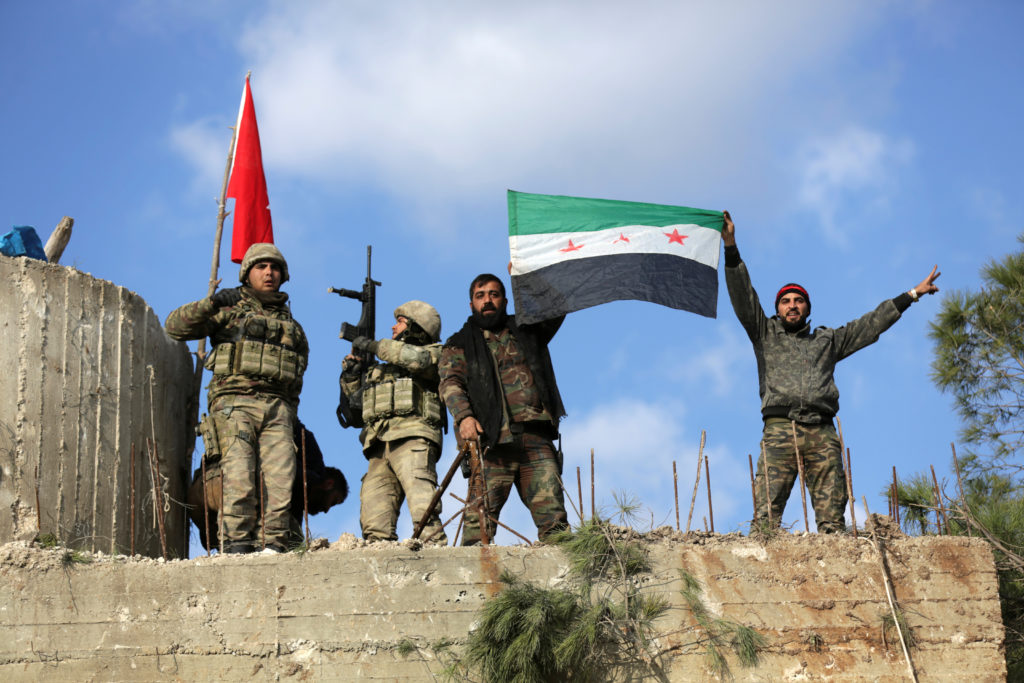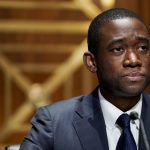Several Syrians were arrested last week in the Turkish controlled city of Jarablus in northern Syria for“desecrating the Turkish flag” after protests against suggestions that Ankara was considering normalising ties with Damascus and its ruler, Bashar Assad.
The arrests, extending a Turkish law against flag desecration to occupied territory, are intriguing and, to some, alarming — and revive questions about Ankara’s long-term goals in northern Syria. Though Turkey claims its presence is necessary to combat Kurdish terrorism and protect Syrians from Assad, does it also harbor neo-imperial ambitions for a permanent outpost?
Turkey first sent troops into northern Syria in 2016 and since then has launched three further major military operations. As a result it is now the key external player in Idlib, the last redoubt of the anti-Assad opposition, and the de facto ruler in three further northern pockets, centered on Afrin, Jarablus/Al-Bab and Tal Abyad. It is in these three pockets where it is most accused of creeping imperialism.
The operations to capture them, launched in 2016, 2018 and 2019, were designed to push terrorists away from Turkey’s southern border. Daesh was the first target but PYD Kurdish militants, who allied with the US to fight Daesh and who Ankara claims are an arm of its own outlawed Kurdish separatists the PKK, soon became the primary focus. Once captured and purged of the PYD and Daesh, these zones served two further purposes. First, they provided a “safe zone” for two million Syrians, mostly opponents of Assad. Ankara had backed the rebels in their unsuccessful efforts to oust the Syrian president and these zones offered the last remnants fleeing Assad’s reconquest a final enclave, along with Idlib. Second, as the 3.4 million Syrian refugees in Turkey proved increasingly unpopular among Turks, these zones were promoted as a resettlement location, with Ankara stating in 2019 it intended to move 1 million refugees to Tal Abyad.
However, the scale of Turkish involvement has raised eyebrows. The Financial Times notes that Turkey has deployed up to 5,000 troops and is spending $2 billion a year there. This includes extending Turkish state services. The Turkish lira has replaced Syrian currency, Turkish banks and the Turkish post office are the only financial services, children learn Turkish as a second language at school, the Turkish Red Crescent operate the hospitals, Turkish ministries direct education and religion, and power comes from Turkey’s grid. Turkish can now be found alongside Arabic on street signs, while some landmarks, such as Saraya Square in Afrin, have been renamed after Turkey’s President Recep Tayyip Erdogan.
Officially these zones are ruled over by Turkey’s Syrian allies — local councils and the Syrian National Army — but these are all salaried and trained by Ankara and it is widely acknowledged they have little independence.
On the one hand, the Turkish government and many of their Syrian supporters reject the accusation of imperialism. After all, there is a legitimate threat from the PKK — an organisation the US and EU have designated as terrorist — and PYD activity along the border has diminished with the advent of these safe zones. Moreover, as seen by the Jarablus protests, Syrian dissidents living there want Turkey to stay and are angry at any suggestion they will normalise with Assad and abandon them. Turkey can further claim that by providing services it is giving northern Syrians a better life than if they remained in Assad-controlled Syria or in refugee camps elsewhere.
Turkey can claim that … it is giving northern Syrians a better life than if they remained in Assad-controlled Syria or in refugee camps elsewhere
Christopher Phillips
But there is a darker side to Turkey’s operations. First, there seems to be a concerted effort by Ankara to shift demographics in its favor. To prevent the PYD’s return Turkey has sought to settle pro-Turkish Sunni Arabs to dilute the Kurdish presence. The most obvious example is Afrin. In 2011 there were an estimated 350,000 Kurds in the city but barely 150,000 after Turkey’s 2018 invasion. Those who remained faced discrimination as Turkey’s Syrian allies looted Kurdish homes, while Kurds were largely excluded from the new ruling and security structures, despite once forming a majority in the city. Turkey then encouraged over 85,000 Sunni Arabs displaced from elsewhere in Syria to move into the vacated Kurdish homes. A once-Kurdish city was transformed into a mostly Sunni Arab pro-Turkish ally.
Second, there have been complaints that Turkey is illegally building permanent structures on occupied land. Rather like Israel’s West Bank settlements, Turkey’s vast new housing projects for the proposed 1 million refugees in Tal Abyad may contravene international law. Third, the character of Turkey’s Syrian allies is questionable. While they’re not as bad as the Assad regime, many of the leading figures in the local councils and the Syrian Arab Army have been accused of acting like thugs and warlords. This is why Turkey’s move to arrest protesters over desecrating the Turkish flag is so controversial. It fits a wider pattern of thuggish autocracy in these “safe zones” that also points to an increasing informal de facto annexation by Ankara.
The future remains unclear. There does seem a degree of genuine support for Turkey’s presence among the local population — at least those who have remained, unlike the many Kurds that fled. As long as Assad remains in Damascus it seems unlikely these opposition-minded Syrians will seek to eject Turkey, nor would they be able to. The future is more likely to be decided in Ankara. These zones are seen as Erdogan’s project, with his domestic opponents less enthusiastic. Were he to lose the 2023 presidential election it is conceivable a new government would cuts its losses. If, however, Erdogan remains for some time, it is plausible to see the imperialism creep more and more, until these regions come to represent de facto Turkish client regimes in the North Cyprus mould.
By: Christopher Phillips is professor of international relations at Queen Mary University of London and author of “The Battle for Syria” and co-editor of “What next for Britain in the Middle East?” Twitter: @cjophillips
Source: Arab News



